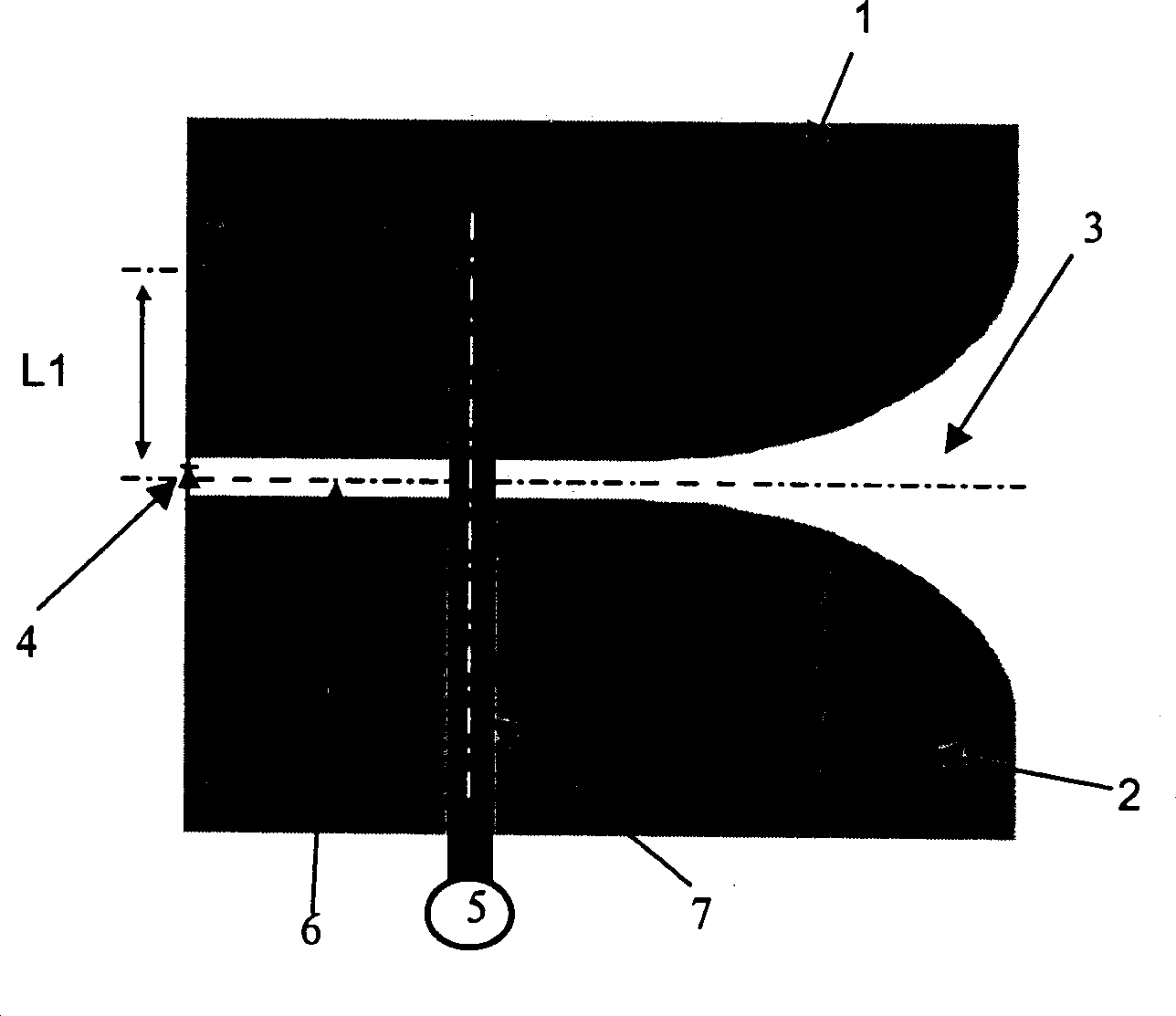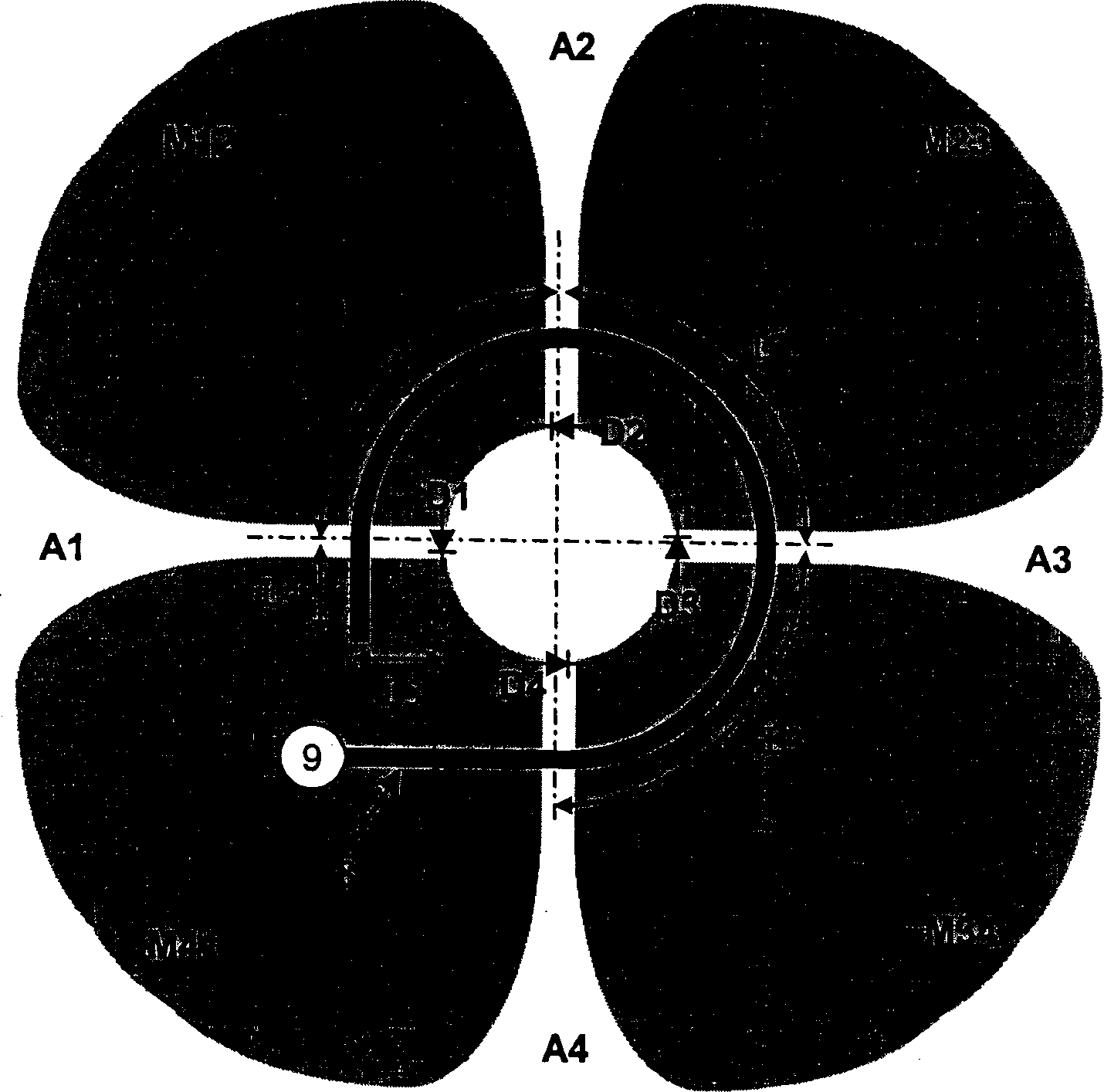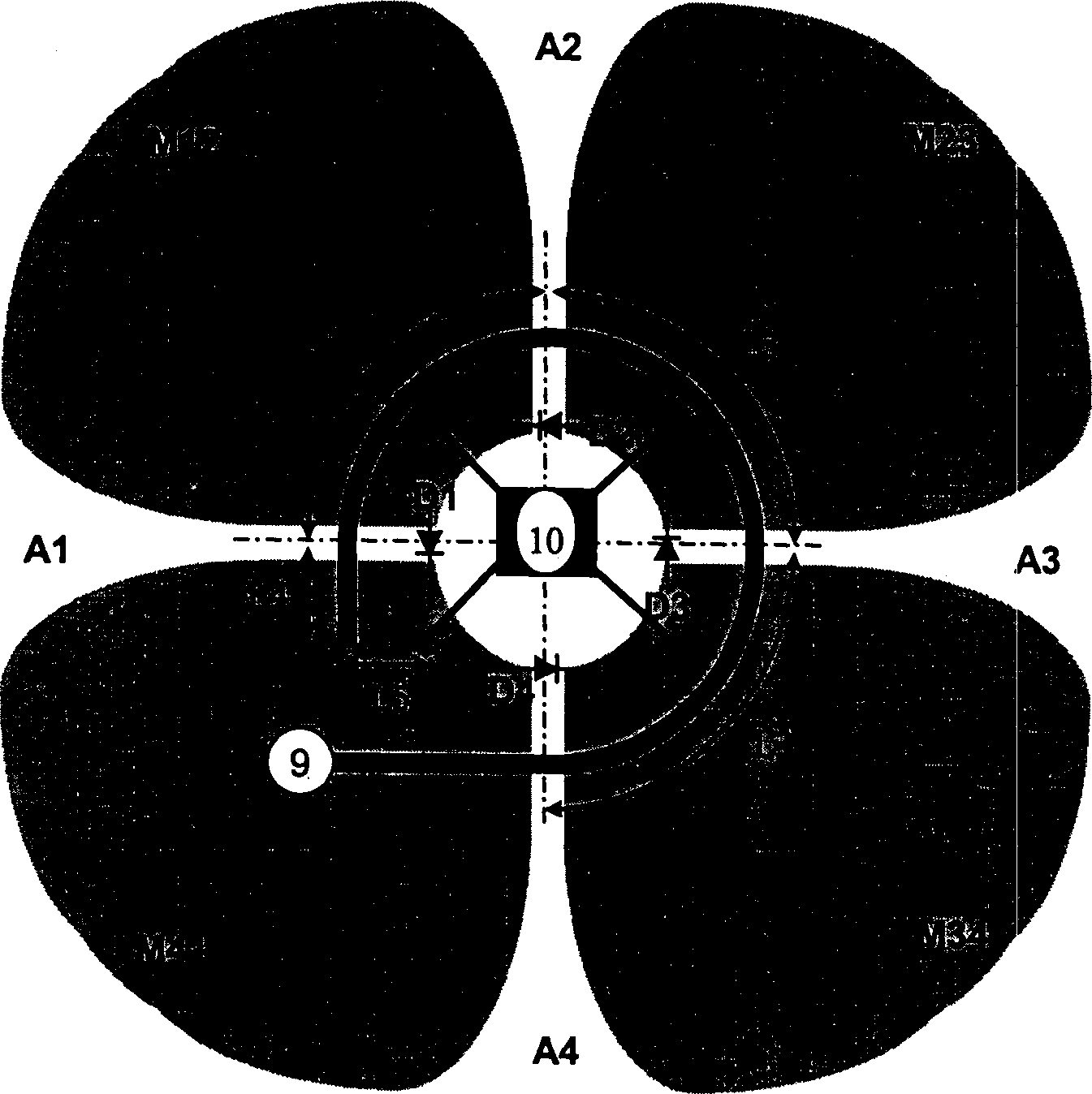Switch device for receiving/emitting electromagnetic wave device
A technology for transmitting waves and stimulating devices, which is applied in the field of wireless transmission, and can solve problems such as increased receiver noise temperature, significant additional costs, and expensive switches
- Summary
- Abstract
- Description
- Claims
- Application Information
AI Technical Summary
Problems solved by technology
Method used
Image
Examples
Embodiment Construction
[0021] figure 1 The Vivaldi type antenna printed on the substrate 3 is shown. The structure and performance of Vivaldi antennas are well-known to those skilled in the art and are described in the following documents, "IEEE Transactions on Antennas and Propagation" by S. Prasad and S. Mahpatra, Volume 2 AP-31, May 1983 , And "Study of discontinuities in open waveguide-application toimprovement of radiating source model" by A. Louzir, R. Clequin, S. Toutain and P. Gelin, Last. Ura CNRS No. 1329. figure 1 The power supply of the Vivaldi antenna is based on the transition from the microstrip line 7 to the slot 6. In order to optimize the energy transmission from the microstrip to the slit, the unopened end of the slit extends vertically to the microline with a length of approximately L2. At the operating frequency of the microstrip line k'λs / 4, λs = λ0 / √εlreff (λ0 is the vacuum In the wavelength, εlreff is the effective relative permittivity of the slit), and K is an odd integer. F...
PUM
 Login to View More
Login to View More Abstract
Description
Claims
Application Information
 Login to View More
Login to View More - R&D
- Intellectual Property
- Life Sciences
- Materials
- Tech Scout
- Unparalleled Data Quality
- Higher Quality Content
- 60% Fewer Hallucinations
Browse by: Latest US Patents, China's latest patents, Technical Efficacy Thesaurus, Application Domain, Technology Topic, Popular Technical Reports.
© 2025 PatSnap. All rights reserved.Legal|Privacy policy|Modern Slavery Act Transparency Statement|Sitemap|About US| Contact US: help@patsnap.com



